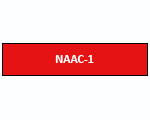SEMESTER-I
PAPER-I -CH-101(INORGANIC CHEMISTRY)
Co: 1-Explain the concept of symmetry element, symmetry operation and point Groups.
Co: 2-Classify and identify symmetry elements and their operations.
Co: 3- Assign point group from all molecules and identify the molecule to which Point group it belongs.
Co: 4-Explain crystal field theory remember the splitting of d-orbital in different Geometries like octahedral tetrahedral, square planar, trigonal planar,trigonal and pentagonal bipyramidal etc. and CFSE calculations.
Co: 5-Classify the molecules into Para, diamagnetic, Ferro and Anti-Ferro, Determination of magnetic susceptibility experimentally and magnetic moment and their applications, High-Low spin cross over.
Co: 6 -Define Binary complexes HSAB rule, stability constants, macro cyclic effect, cry plate effect, john teller effect, and tertiary complexes.
Co:7-Determination of stability constants experimentally PH-metric method, spectrophotometric and polarographic methods.
Co: 8-Describe MOB for CO, NO and N2 and their bonding modes, bond rind Techniques, donar and acceptor orbitals.
Co: 9-Define 18 electron rule, explain the structures with examples.
PAPER-II -CH-102 (ORGANIC CHEMISTRY)
Co: 1-Determine the configuration in E and Z isomers.
Co: 2-Explain the symmetry elements and symmetry operations in molecules.
Co: 3-Explain Racemisation and resolution techniques.
Co: 4-Explain the criteria for chirality.
Co: 5-Describe the methods of determination of relative and absolute Configurations.
Co: 6-Explain the mechanism of elimination reactions and electrophonic addition to c-c double bond.
Co: 7-Discuss the various methods of determination of reaction mechanism.
Co: 8-Discuss the conformations in saturated and unsaturated acyclic Compounds and the factors affecting the stability and reactivity of Conformations.
Co: 9-Expalin the general methods in structure determination of terpenoids and Alkaloids.
Co: 10-Explain the nomenclature, synthesis and reactivity of heterocyclic Compound.
PAPER-III -CH-103: (PHYSICAL CHEMISTRY)
Co: 1-Discuss about concepts of entropy
Co: 2-Cetermine the third law of thermodynamics
Co: 3-Explain briefly about Gibbs equation for non-equilibrium systems and material equilibrium phase equilibrium
Co: 4-Briefly discuss about solutions
Co: 5-Discuss about electrochemical cells and applications of EMF measurements
Co: 6-Explain the concept of activity and activity of coefficients in electrolytic solutions and mean ionic activity coefficient, Debye Huckel theory of electrolytic solutions
Co: 7-Write about concept of ion association
Co: 8-Determine the black body radiation, planks concept, quantitization and planks equation
Co: 9-Discuss about operators and postulates of quantum mechanics
Co: 10-Explain theories of reaction rates and complex reaction
Co: 11-Write effect of structure on reactivity
PAPER-IV -CH-104(ANALYTICAL TECHNIQUES AND SPECTROSCOPY)
C0:1- Discuss the classification of chromatographic techniques and explain rate theory in Chromatographic separations.
Co: 2- Explain the principle and instrumentation of GC and HPLC also briefly describe methods of quantification of GC and HPLC.
Co: 3-Explain the principle of 1 H-NMR spectroscopy, instrumentation, chemical shift, factors affecting them, signal integration, spin-spin coupling, coupling constants and factors affecting them and application of 1 H-NMR spectroscopy.
Co: 4-Discuss the application of rotational spectra in calculation of bond length of diatomic molecule with suitable examples.
Co: 5-Explain isotopic effect on rotational spectra with suitable examples.
Co: 6-Calculate force constant from vibrational frequency and explain concept of group frequency.
Co: 7-Explain how IR-spectroscopy is useful for identification mode of bonding in metal-nitrate complex.
Co: 8-Explain quantum theory of Raman Effect.
Co: 9-Discuss the complementary nature of IR and Raman spectra.
Co: 10-Expalin the application of beers law in the determination of dissociation constant of weak acid.
C0: 11-Briefly account for the absorption spectra of charge transfer complexes.
Co: 12-Identify the lambda max value for different compounds based on woodward- fisher rule.
SEMESTER-II
PAPER-I -CH-201(INORGANIC CHEMISTRY)
Co: 1- Define activated complex, transition state intermediate, from energy profile diagram. Classify substitution reactions like SN 1, SN 2, acid hydrolysis, base hydrolysis, substitution without M-L bond cleavage.
Co: 2-Discuss how ligand substitution reaction takes place in octa hedral and square planar complexes. Trans effect, applications and theories, Marcus-hush theory.
Co: 3-Explain different types of electron transfer reactions and factors affecting them.
Co: 4-Define the terms, state and microstate and their calculations.
Co: 5-Explain different types of coupling whole formalism, Hunds rule and parameters.
Co: 6-Classify carbonyl clusters and their structures patterns.
Co: 7-Explain mental carbonyl scrambling, polyhedral skeletal electron pair theory total electron count, coupling rule.
Co: 8-Describe structural patterns in dinuclear metal-metal systems.
Co: 9-Disscus about boranes, carborane, STYX rule.
Co: 10-Explain how metal take part in biological system and their concentration effect and physiological effect on biological system.
Co:11-Determine the structures of myoglobin, hemoglobin, oxygenation, cooperatively of hemoglobin and myoglobin.
Co: 12-Discuss photosynthesis, PS-I, PS-II, Vit -B 6 catalyzed reactions.
PAPER-II -CH-202T (ORGANIC CHEMISTRY)
Co: 1-Explain nucleophilic aromatic substitution reactions.
Co: 2-Discuss about neighboring group participation.
Co: 3-Explain about the ambient nucleophiles.
Co: 4-Discuss about pericyclic reactions.
Co: 5-Explain about the FMO theory or HOMO-LUMO approach.
Co: 6-Discuss about the aromatic transition state (AST) theory or perturbation Molecular orbital's (PMO) approach.
Co: 7-Explain the photo-chemistry of (p-p *) transitions'.
Co: 8-Discuss about the photo-chemistry of (n-p *)
PAPER- III-CH-203(PHYSICAL CHEMISTRY)
Co: 1-Write briefly about ideal solutions, thermodynamic properties of ideal solutions and mixing quantities
Co: 2-Discuss about multicomponent phase equilibrium
Co: 3-Explain the non-ideal systems, concepts of fugacity, activities and activity coefficients
Co: 4-Determine the statistical thermodynamic
Co: 5-Write briefly about electronic transitions in molecules and frank Condon principle, electronically excited molecules
Co: 6-Discuss about actinometry
Co: 7-Explain E-Type delayed florescence and photo physical processes
Co: 8-Determine the types of photochemical reaction
Co: 9-Explain about fast reactions
Co: 10-Explain briefly about Schrodinger equation for the hydrogen atom
Co: 11-Discuss about variation method and variation parameters
Co: 12-Discuss about electronic properties of metals, insulators and semi-conductors and nanoparticles and applications
Co: 13-Explain briefly about introduction of nanoparticles and reduced dimensionality n solids and applications of nanoparticles
PAPER-IV -CH-204(ANALYTICAL TECHNIQUES AND SPECTROSCOPY-II)
Co: 1-Discuss types of thermo analytical methods.
Co: 2-Explain the instrumentation, principle and application of cyclic voltametry.
Co: 3-Give a brief account of I) A.C.Polarography ii) Square wave polarography iii) Pulse polarography IV) Different pulse polarography
Co: 4-Discuss the principle and application of thermogravimetry, different thermal analysis and different scanning calorimetry.
Co: 5-Differentiate first order and non-first order spectra.
Co: 6-Explain the phenomenon of NOE with suitable examples.
Co: 7-Explain the principle involved in magic angle spinning NMR.
Co: 8-Distinguish the enantiomers by using chiral NMR solvents and chiral lanthanide shift reagent and explain moscher's acid.
Co: 9-Discuss the principle and instrumentation of different types of mass spectrometer.
Co: 10-Outline salient features of fragmentation pattern of organic compounds.
Co: 11-Discuss principle, instrumentation of electron spin resonance spectroscopy and its application.
SEMESTER-III
PAPER I (CH (AC) 301) T: CORE: SAMPLING, DATA HANDLING, CLASSICAL AND ATOMIC SPECTRAL METHODS OF ANALYSIS
Co: 1- Classify Analytical Methods
Co: 2- Describe Data Handling Techniques
Co: 3- Explain different kinds of Titrations (Redox & Complexo metry)
Co: 4- Discuss the theory and Precipitation reagents in gravimetric analysis
Co: 5- Explain the instrumentation and applications of TG, DTA, and DSC.
Co: 6- Explain radio chemical methods, Principles and applications.
Co: 7-Discuss the principles, Instrumentation, interferences, evaluation and applications of atomic absorption spectroscopy (AES), (AAS).
Co: 8- Describe the principles of plasma spectroscopy instrumentation and applications of ICP-AES.
Co: 9- Compare ICP-AES with AAS.
PAPER II - (CH (AC)302)T: SPECTROSCOPIC METHODS OF ANALYSIS -I
Co: 1- Classify C-13 NMR spectroscopy.
Co: 2- Applications of NMR to various complexes.
Co: 3-explain about advanced NMR spectroscopy.
Co: 4- Classify two dimensional NMR.
Co: 5- Discuss ESR Principle, Instrumentation and applications.
Co: 6- Explain ESR spectra of d1-d9 Transition metal complexes and interpretation and evidence of metal ligand bond, co-valiancy complexes.
Co: 7- Explain Mossbauer Spectroscopy principle and applications
Co: 8- Discuss NQR Spectroscopy.
PAPER III- CH (AC)303-I ELECTIVE III A-MISCELLANEOUS METHODS OF ANALYSIS
Co: 1- Classify different types of surface measurements.
Co: 2- Explain principle instrumentation and applications of SEM, EPXMA, RBS, SIMS, STM & AFM.
CO3- Remember X-ray Generation and properties.
C0: 4-explain Braggs Equation, Powder and crystal methods.
Co: 5- Describe principle and applications of electron diffraction, Neutron diffraction, XRF methods.
Co: 6- Explain Principle instrumentation, applications of electro analytical methods.
Co: 7-Explain theory, instrumentation and applications of high frequency titrations.
Co: 8- Explain Micro metrics and particle size analysis.
Co: 9- Explain theories of drug dissolution.
Co: 10-Explain dissolution tests and disintegration tests for tablets, capsules and enteric coated tablets.
PAPER IV-CH(AC)304-T- ELECTIVE III A- APPLIED ANALYSIS:
Co: 1- Discuss About analysis of Ferro and Anti Ferro alloys and cement.
Co: 2- Explain analysis of oils and fats, soaps and detergents, paints and pigments.
Co: 3- Explain about analysis of air pollutants.
Co: 4- Discuss about analysis of water pollutants with different experimental techniques.
Co: 5- Estimate different clinical compounds with different techniques.
Co: 6- Discuss about different type of pharmaceutical substances with different spectro photo metric methods.
Co: 7- Explain about analysis of food.
Co: 8- Briefly discuss about agricultural analysis and micro-macro nutrients.
SEMESTER-IV
PAPER I- CH (AC)401:T SPECTROSCOPIC METHODS OF ANALYSIS II
Co: 1- Discuss about UV- visible spectroscopy, instrumentation, classification.
Co: 2-Discuss selection roles and factors effecting bond shapes.
Co: 3- Explain or gel diagrams for d1-d9 configurations and crystal field spectra of Oh and Td metal complexes of 3d metals.
Co: 4- Discuss about IR spectroscopy principles instrumentation and applications.
Co: 5- Explain Raman spectroscopy theory instrumentation and applications.
Co: 6- Discuss about Refractometry and polari metry, theory, instrumentation and applications.
Co: 7-Explain resonance Raman spectroscopic principle theory and applications.
Co: 8-Explain about rotator dispersion and circular dichorism and applications.
Co: 9-Briefly discuss about fluorimetry and phosphorimetry.
Co: 10- Applications of fluorimetry and phosphorimetry.
Co: 11- Explain nephelo metry and turbidi metry principles instrumentations and applications.
PAPER II CH (AC)402 T-CORE : SEPARATION METHODS
Co: 1- Explain Distribution co efficient, distribution ratio relation between KD and D
Co: 2- Describe the solvent extraction of metals.
Co: 3- Explain the theoretical basis for use of organic reagents in organic analysis.
Co: 4- Discuss the theory, instrumentation and applications of HPTLC, GC, and HPLC.
Co: 5- Describe the principle, instrumentation and applications of size exclusion chromatography and UPLC.
Co: 6- Classify mass analyzers and interfaces used in Hyphenated techniques.
Co: 7- Explain principle, instrumentation and application of GC-MS, GC-FT-IR, LC- MS, LC-MS-MS-ICP-MS.
Co: 8- Define electrophoresis
Co: 9- Explain principles techniques and applications of electrophoresis.
PAPER III- CH (AC)403 T- ELECTIVE III A - LABORATORY MANAGEMENT
Co1- Classify analytical and instrumental methods.
Co2- Explain flow injection and discrete automatic systems.
Co3- Describe good laboratory practices.
Co4- Discuss Laboratory management system.
Co5- Explain Computer aided analysis
Co: 6- Discuss various disciplines represented in the laboratory.
Co: 7- Explain different SRM'S used in laboratories
Co: 8- Discuss accreditation of laboratories.
Co: 9- Explain Analytical methods.
Co: 10- Describe TQM and essentials of TQM
Co: 11- Classify analytical methods and process validation.
PAPER IV-CH (AC)404 T QUALITY ASSURANCE & ACCREDITATION
Co: 1- Explain quality control and quality assurance concepts and significant.
Co: 2- Describe quality control and statistical techniques.
Co: 3- Discuss about calibration maintenance of instruments.
Co: 4- Describe documentation of quality assurance of raw data.
Co: 5- Discuss about good laboratory practices and define quality program and personnel.
Co: 6- Explain briefly about computers and quality assurance.
Co: 7- Discuss establishing a quality assurance program.
Co: 8- Describe the laboratory accreditation.
Co: 9- Discuss the evolution and significance of quality management.
Co: 10- Discuss the ISO standards and advantages.
Co: 11- Define quality manual, Quality policy, Conformities and non conformities.




